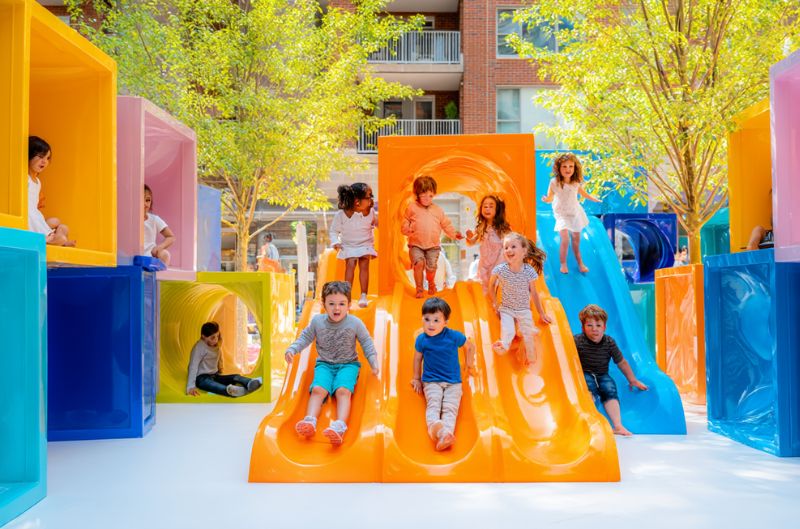
Modular and Compact Playground Designs for Urban Spaces
Author: Austin Stanfel
Urban environments face unique challenges when it comes to creating playgrounds. Limited space, diverse user needs, and the desire for multifunctional, inclusive, and sustainable play areas require innovative design approaches. Modular and compact playground designs have emerged as practical solutions to transform small or constrained urban spaces into vibrant, engaging, and accessible play environments.
The Importance of Play in Urban Settings
Playgrounds in cities are more than just recreational spots for children; they are vital community hubs that promote physical activity, social interaction, and cognitive development. Urban playgrounds also contribute to a city’s visual and cultural identity, serving as landmarks and green oases that benefit all residents, including older adults seeking respite from urban stress.
Modular Playground Designs: Flexibility and Customization
Modular playground systems consist of interlocking or connectable units that can be arranged, expanded, or reconfigured to fit a community’s specific spatial and demographic needs. This flexibility is a significant advantage in urban settings where space is limited, and needs often change over time.
- Space Efficiency: Modular units can be compactly arranged or stacked vertically, maximizing play opportunities in small footprints without compromising safety or accessibility.
- Customizable Play Experiences: These systems can be tailored to different age groups, abilities, and play preferences, incorporating various sensory, physical, and imaginative elements. For example, some modular units might focus on climbing and sliding for older children, while others provide sensory panels or quiet spaces for younger or differently-abled kids.
- Sustainability and Durability: Many modular playgrounds use sustainable materials like wood, cork, or CO2-neutral linoleum, balancing robustness with environmental responsibility. Innovative designs also minimize waste through optimized cutting and fabrication techniques.
- Inclusivity: Modular designs facilitate inclusive play by integrating accessible features and sensory-rich components that encourage social interaction among children of all abilities.
Compact Playground Designs: Maximizing Small Urban Spaces
Compact playgrounds are designed to deliver maximum play value within minimal space, an everyday necessity in dense urban areas.
- Vertical Play Structures: Utilizing height rather than ground area, multi-level towers with climbing walls, spiral slides, and interactive panels offer diverse play challenges and imaginative exploration without requiring large footprints.
- Multi-Functional Equipment: Equipment that serves several purposes, such as combining climbing nets, slides, and sensory panels, enhances play diversity while conserving space.
- Interactive Ground Features: Incorporating play elements directly into the ground, like hopscotch patterns, sensory paths, or ground-level bouncers, adds playful experiences without bulky structures.
- Natural Elements Integration: Using natural materials such as logs, boulders, and gardens creates eco-friendly play environments that blend with urban greenery and provide calming sensory experiences.
- Creative Use of Boundaries: Play panels, murals, and climbing holds mounted on fences or walls extend the play area vertically and engage children without requiring additional land.
- Shelter and Shade: Compact shade structures and shelters improve usability and comfort in small parks, encouraging longer and more frequent family visits.
Thematic and Sculptural Modular Playgrounds
Some modular playgrounds incorporate thematic or sculptural designs to enhance engagement and urban aesthetics. For instance, the Urban Playground in London uses interlocking puzzle-like modules made from tactile materials like cork and linoleum to create a trail of play experiences that serve as informal gathering spaces and landmarks. Such designs invite children and adults to explore and interact, enriching the city’s social fabric.
Community and Health Benefits
Well-designed modular and compact playgrounds foster community cohesion by providing inclusive spaces where children of different backgrounds and abilities can play together. They also support physical health by encouraging active play, crucial in combating childhood obesity and promoting lifelong fitness habits. Additionally, playgrounds offer cognitive and social benefits by enabling problem-solving, cooperation, and sensory development.
Conclusion
Modular and compact playground designs offer versatile, sustainable, and inclusive solutions for urban spaces challenged by limited areas and diverse community needs. These playgrounds transform small urban corners into dynamic activity and social interaction hubs by maximizing play value through flexible configurations, vertical structures, multi-functional equipment, and integration with natural and boundary elements. Thoughtful design enriches children’s play experiences, enhances the urban landscape, and strengthens community well-being.

